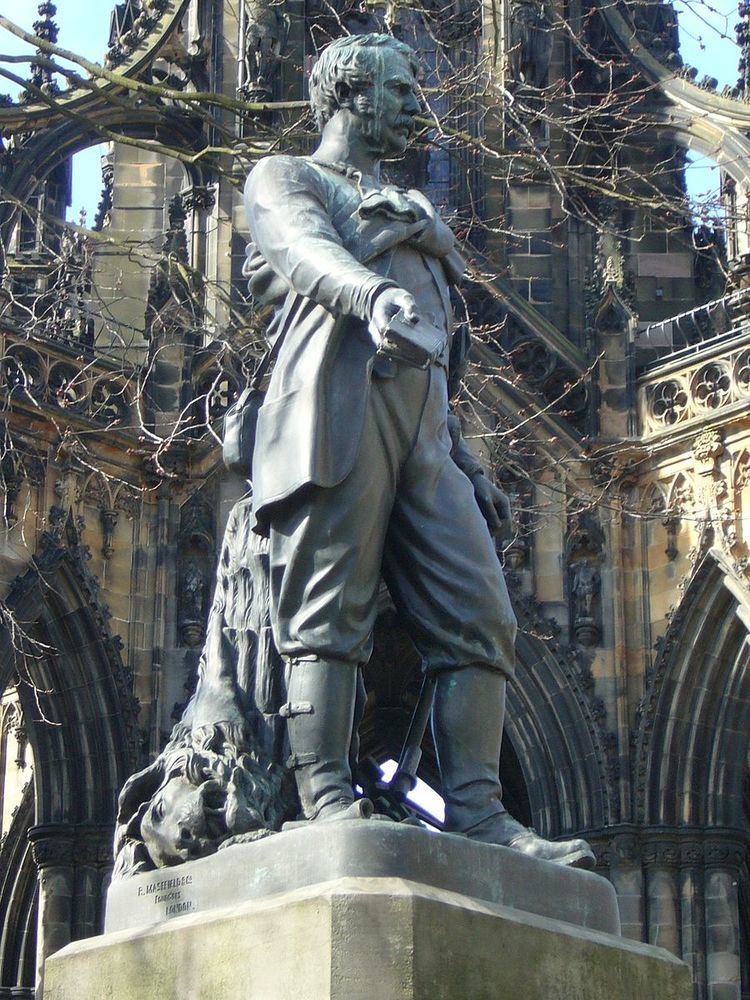Name Amelia Hill | ||
 | ||
Amelia Robertson Hill (15 January 1821 – 5 July 1904), birth record Emmilia McDermaid Paton, was a prominent female Scottish artist and sculptor throughout the 19th century and one of the few with very public commissions, most noteworthy being the statue of David Livingstone in Princes Street Gardens and Robert Burns in Dumfries. She also was the main female contributor to the statues on the Scott Monument, contributing three figures thereon.
Contents
Life
She was born in Wooer’s Alley, Dunfermline, the daughter of Joseph Neil Paton (1797-1874) a damask designer and Catherine McDiarmid. She had a sister Jemima, born in 11 November 1823 and her brothers were both artists: Joseph Noel Paton (13 December 1821 - 26 December 1901) and Waller Hugh Paton (27 July 1828 - 8 March 1895).
She appears to have trained as a sculptor under William Brodie in Edinburgh.
In 1862 she married the pioneer photographer David Octavius Hill as his second wife and her career blossomed. They lived in Edinburgh. His role as secretary of the Royal Scottish Academy played a part in this. In 1861 they moved to George Square, and in 1863 to Calton Stairs. In 1868 they set up home at Rock House, on the south-west corner of Calton Hill near the southern entrance steps to the hill. Although they are famously connected with this address they lived here only two years. He died in 1870 and Amelia moved out of the house, to Newington Lodge. She placed a bronze bust of his likeness, sculpted by her own hands, on his grave. They had no children.
The 1891 census describes her as “sculptor, retired” but she exhibited at the Royal Scottish Academy until 1902, aged 82.
She died at her house, Newington Lodge, 38 Mayfield Terrace on 5 July 1904 aged 83.
She was buried next to her husband in Dean Cemetery, beneath her own sculpture of 34 years earlier.
